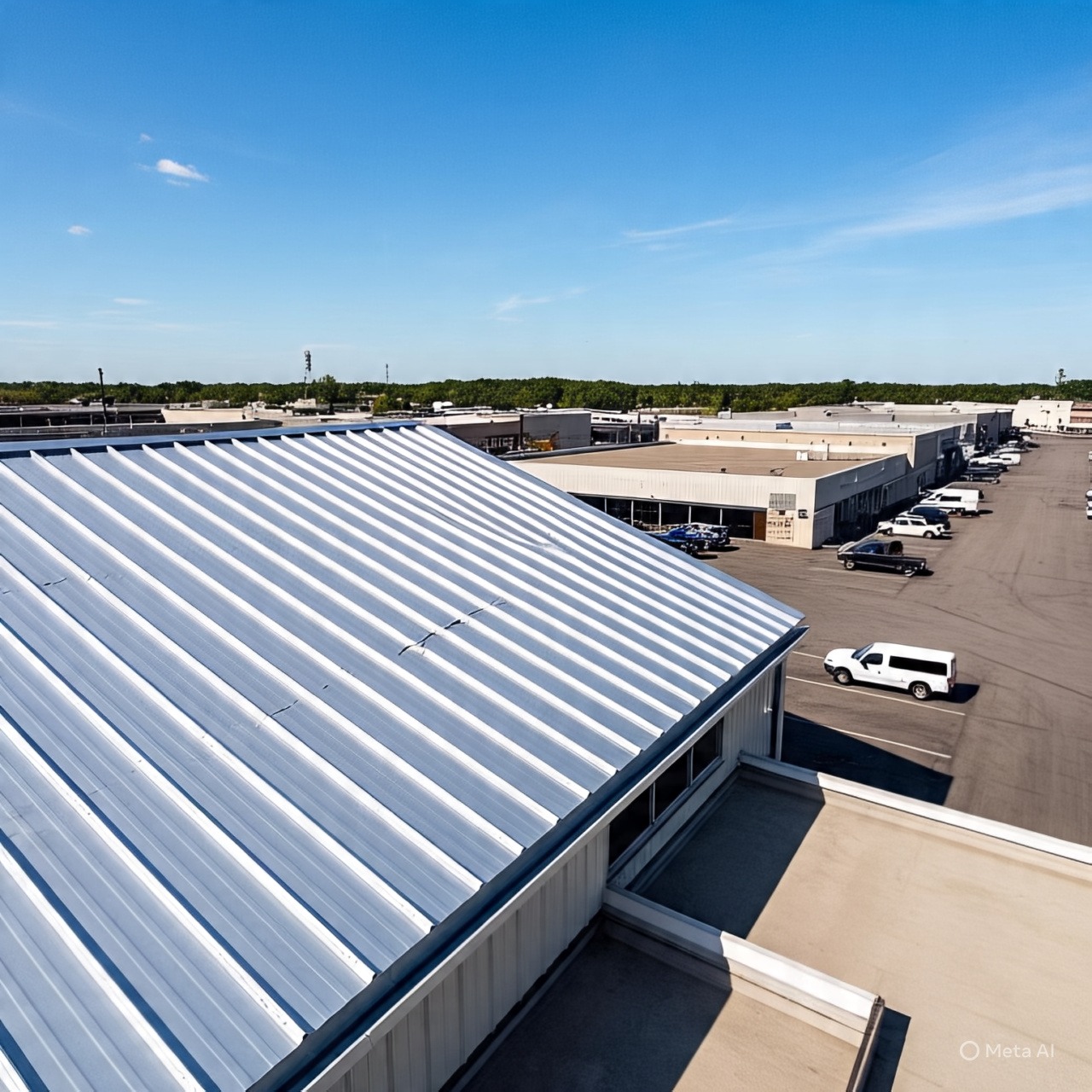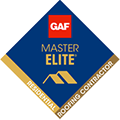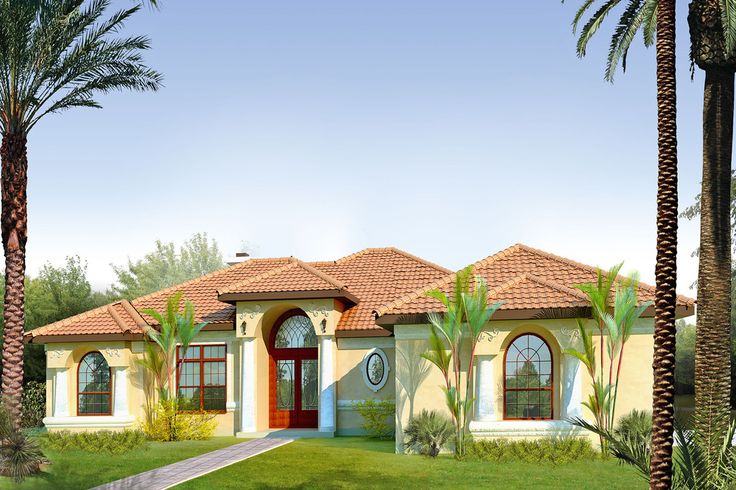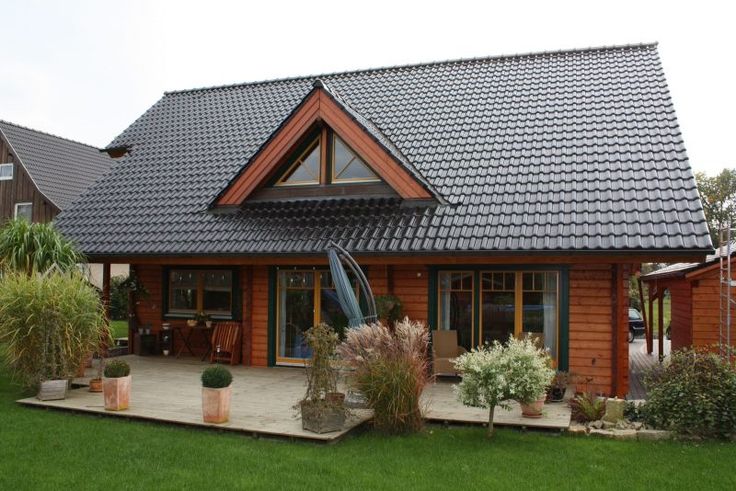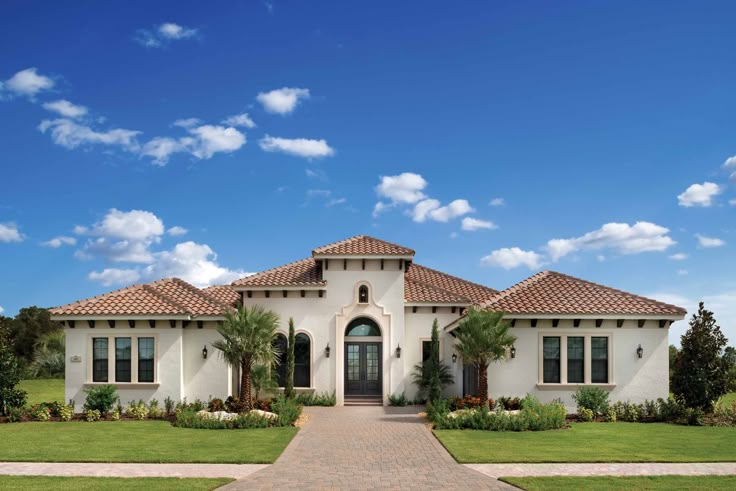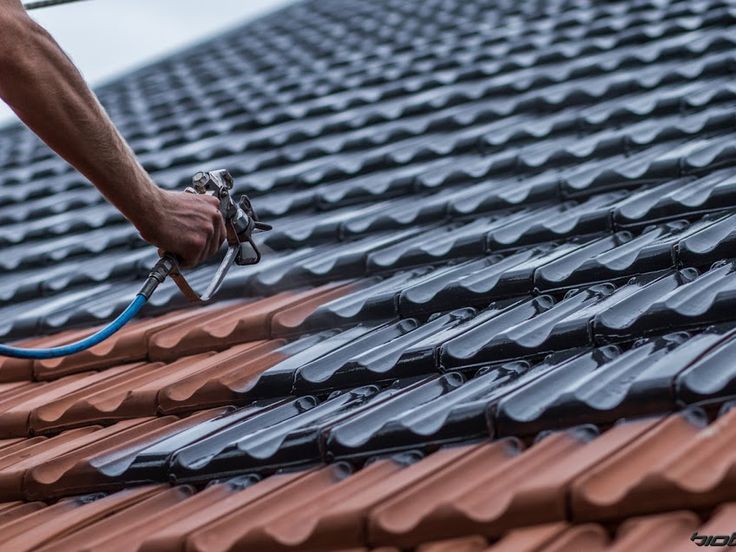Standing seam metal roofs are usually the first choice for people and businesses in Idaho and the Pacific Northwest when they want a durable and effective roofing solution. With Sierra Roof Inc. ‘s expertise, this type of roof offers excellent protection for homes, improves their appearance, and adds value over time. Let’s start by imagining it: picture smooth metal panels standing straight up along the slope of a roof, with their edges fitting together neatly, like perfectly matched tiles. That’s what standing seam looks like, and it’s a great fit for rustic mountain cabins, sunny valley homes, and modern suburban houses throughout our service area, including Boise, Twin Falls, and other nearby areas.
What Exactly Is a Standing Seam Metal Roof?
Drive through a quiet mountain town or a modern suburban area and notice a roof with smooth, straight lines from top to bottom? It might be a standing seam metal roof. This type of roofing is built to last for many years, even in tough weather.
Standing seam metal roofs use long vertical metal panels that run from the top of the roof down to the edges.
The seams where these panels meet are raised, which gives the roof its name and makes it stand out. These seams are 1 to 2 inches tall and are joined together by snapping, mechanical seaming, or rolling during installation.
Unlike traditional shingles or corrugated metal roofs, standing seam roofs have hidden fasteners.
The screws or clips that hold the roof together are covered, which helps protect them from the elements. This small but important design helps the roof perform better. Exposed fasteners can let water in and cause the roof to wear out faster. But with standing seam roofs, those weak points
Standing seam metal roofs are typically made from high-grade metals like:
- Galvanized Steel: A strong, corrosion-resistant option with a zinc coating.
- Galvalume: A steel base coated with a combination of aluminum and zinc, offering enhanced rust protection.
- Aluminum: Especially great in coastal or high-moisture areas, aluminum naturally resists corrosion without requiring a coating.
- Copper or Zinc (less common, but available): These are premium metals that develop a natural patina over time and are often used for historic or luxury properties.
A wide range of colors and finishes are available to homeowners in addition to material choice. You can go beyond industrial gray. Advanced baked-on coatings like PVDF (Kynar 500) let you choose rich colors like deep forest green, slate blue, burned copper, barn red, or matte black. Besides looking beautiful, these treatments reflect heat, resist fading, and increase roof life.
Sierra Roof Inc. works closely with customers to choose a metal type and color that matches the home’s appearance, landscaping, and neighborhood. You may blend in silently or make a big architectural statement with a standing seam roof without sacrificing durability or performance.
Standing seam metal roofs are more than just a stylish enhancement. Sierra Roof Inc. provides Pacific Northwest customers with a smart, high-performance roofing solution that lasts, resists weather, and looks.
Performance Worth Talking About
One of the highest priorities for anyone planning a roof in climates like ours Idaho’s cold winters, Pacific Northwest rain, and hot summer sun is resilience. Here’s how standing seam metal roofs deliver:
Weather Tightness
The hidden fasteners and vertical seams resist uplift from wind gusts far better than traditional asphalt shingles. Water flows straight off without risking pooling or leaks. Even in heavy snowfall, these systems shed snow efficiently due to their slick coated surfaces and slope design.
Lifespan & Durability
A typical asphalt shingle roof may last 15–25 years; a standing seam metal roof can easily last 50+ years when properly maintained. The advanced coatings resist corrosion and fading, and metal panels won’t split or crack like other materials might over time. Sierra Roof Inc. stands behind its installations with robust workmanship warranties.
Energy Efficiency
Reflective finishes can reduce heat absorption, lowering attic temperatures and reducing air conditioning demand. Many homeowners notice significant drops in their summer energy bills. Plus, some finishes qualify for energy tax credits depending on current regulations.
Fire Resistance
Metal roofing is non-combustible an A‑rated fire-resistant material. That can be a huge bonus in wildfire-prone areas or where municipal building codes are strict.
Environmentally Friendly
Metal roofs are often made from recycled materials and are fully recyclable at end of life. Their longevity means less material goes to landfills over time, making them a sustainability champion among roofing types.
Materials and Finishes You Can Choose
Choosing the right metal and finish is partly aesthetic but equally important are performance and cost considerations. Here’s a breakdown:
Galvanized Steel
Steel coated in zinc is cost-effective. With proper primer and paint, it resists rust and bolsters strength. While the base steel can corrode over decades if paint erodes, modern coatings from Sierra Roof Inc. reduce that risk significantly.
Galvalume (Steel with Aluminum-Zinc Coating)
One of the most popular choices, Galvalume adds aluminum to the coating mix, greatly enhancing corrosion resistance especially in snowy or coastal conditions. It’s lightweight, strong, and often available in vibrant, long-lasting finished colors.
Aluminum
Ideal for coastal or high-humidity zones (e.g., southern British Columbia), aluminum doesn’t rust even at edges. Though it’s typically more expensive per square foot, it’s lightweight and corrosion-proof. For homeowners in Bremerton or Vancouver, BC, it’s a natural choice.
Thickness and Gauge
The thickness of metal panels is measured in gauge: the lower the gauge, the thicker and more robust the panel. Sierra Roof Inc. usually installs between 24 to 22 gauge a mid-range thickness offering an ideal balance between cost, weight, and structural durability. For clients wanting more resilience against hail or physical damage, heavier gauges like 26 or 28 may be considered.
Finishes and Paint
From classic matte whites to custom metallic, finishes not only enhance curb appeal they protect the metal beneath from UV rays, oxidation, and wear. High-quality PVDF (polyvinylidene fluoride) coatings, like Kynar 500 or Hilary 5000, can last 30–40 years without noticeable fading, preserving a “factory-fresh” look for decades.
Styles & Seam Types
Sierra Roof Inc. installs several standing seam roof typologies, including:
Snap-Lock
Panels snap together over pre-installed clips. This system is fast, economical, and ideal for slopes of 3:12 or steeper. It offers clean lines and a slim profile.
Mechanical Seam
Panels are crimped together on-site with a seaming tool. These seams (single or double) create an airtight barrier ideal in windy or snowy environments, or slopes as low as 2:12.
Batten Roll-Form
Rounded or square battens (caps) lock panels in place after clips are attached. This style gives a traditional, more pronounced look reminiscent of barn-style edges widely used in agricultural or rustic architecture.
Installation: Sierra Roof Inc.’s Process
Sierra Roof Inc.’s installation method is methodical and quality-focused:
- Initial Consultation & Inspection
Technicians assess existing roof layout, sheathing condition, attic ventilation, insulation, and local weather factors. Every detail like where valleys, ridges, skylights, and chimney locations lie is accounted for. - Material Sourcing
Based on customer preference and performance evaluation, Sierra Roof orders the selected metal, panels, trims, fasteners, underlayment, and flashing from trusted manufacturers. - Deck Prep & Underlayment
If the sheathing needs reinforcement or replacement, they handle that first. Then a breathable, water-resistant underlayment is installed to protect against inadvertent moisture under the metal. - Clip & Panel Placement
Concealed clips are fastened to the roof deck, allowing panels to “float” slightly with temperature changes. Panels are then snapped or mechanically seamed in agricultural-like rows. - Trim, Flashing & Ridge Caps
Sierra Roof installs durable flange-based flashing around penetrations like chimneys or skylights folded tightly into the roof, so water can’t intrude. Ridge and eave caps provide the finishing touch. - Cleanup & Final Inspection
After installation, Sierra crews remove all debris, check seams, fasteners, and trim, and conduct a final walkthrough with the customer ensuring satisfaction before the final sign-off.
Where Standing Seam Metal Roof Excels Locally
Residential Homes
Whether you’re near Boise’s foothills or in a modern Eagle subdivision, homeowners love the seamless silhouette and weather resistance. The classic look fits both mountain cabins and upscale suburban properties.
Commercial & Agricultural Structures
Barns, stables, workshops, and retail buildings benefit from metal’s durability and reduced maintenance. For example, a Snake River ranch recently chose standing seam to replace a leaking old roof with a low-slope, high-performance system that will last 70+ years.
Historic and Architectural Projects
For craftsmen restoring Washington or Oregon heritage homes, Sierra Roof can match or complement existing materials while offering modern protection. For projects requiring Historic Preservation approvals, metal roofs often meet aesthetic while improving durability and fire safety.
Coastal & Marine Environments
For properties near Oregon’s coastline or Washington’s Salish Sea, aluminum roofs resist salt spray and moisture. Standing seam systems also tolerate marine wind uplift and moisture better than shingles, reducing ongoing maintenance.
Cost Considerations & Return on Investment
Upfront Costs
A standing seam metal roof typically costs more than asphalt but less than slate or tile. Typical ranges are around $7–12 per square foot installed, depending on metal type, finish quality, complexity of roof geometry, and accessories like snow guards or gutter systems.
Savings Over Time
Because standing seam roofs last 50+ years, you avoid multiple asphalt re‑roofs. They can reduce energy bills, may provide insurance discounts for fire resistance, and lift property value significantly especially in neighborhoods that prize quality craftsmanship.
Incentives
Occasionally, federal, state, or utility-level energy-efficiency rebates apply to high-reflectance metal roofing. Sierra Roof always explores current incentives to reduce customer cost.
Maintenance & Care
Inspection
Conduct bi-annual roof checks (spring and autumn), looking for debris, loose fasteners, or panel issues. Quick detection prevents bigger problems later.
Snow & Ice
Sierra Roof can install snow guards to prevent abrupt avalanches. These steadily release snow across the roof, protecting gutters, landscaping, and people below.
Cleaning & Repairs
Rinse panels occasionally especially in areas near deciduous trees or road salt to keep the finish pristine. If scratches or minor chips appear, touch-up paint kits help preserve corrosion resistance.
Sustainability & Green Certifications
Standing seam metal roofing is a green choice:
- Recycled Content: Many systems contain 25–95% recycled metal.
- Energy Credits: High-IR finishes may make you eligible for energy efficiency tax credits.
- Recyclable: At end of life, every panel is 100% recyclable.
This supports green building certifications like LEED, DOE’s Zero Energy Ready Home, or Earth Craft helpful in green-conscious areas near Portland, Spokane, or Seattle suburbs.
Tips for Choosing Your Standing Seam Roof
- Assess Slope & Climate: If winter snowfall or wind is heavy, ask Sierra Roof about mechanical seams and snow exclusion systems.
- Select Material Thoughtfully: Coastal properties benefit from aluminum; landlocked mountain zones may prefer Galvalume.
- Gauge vs. Price: Heavier panels resist denting (hail), but carry slightly higher cost discuss local hail risk with Sierra’s team.
- Finish Quality Matters: Opting for premium PVDF coatings increases longevity and color retention.
- Thermal Considerations: Add insulation or consider ventilated roof systems for energy efficiency and ice dam management.
- Future Projects: Planning solar? Standing seam’s concealed clips make installing solar rail systems or walkway cleaning access much easier without penetrating the roof surface.
FAQs on Standing Seam Metal Roofing
Q: How long does a standing seam metal roof last?
A properly installed, well-maintained system lasts 50 years or more. Most warranties cover 30–40 years on the finish and 20 years on workmanship, with many roofs still strong after half a century.
Q: Do metal roofs get noisy in rain or hail?
No. Standing seam systems are installed over an underlayment and solid deck, which greatly reduces noise. Most homeowners report no perceptible difference compared to other roofing types.
Q: Can I mount solar panels or satellite dishes?
Yes solar mounts can clamp onto seams without penetrating panels, and satellites are best mounted on ridge or wall attachments. Sierra Roof avoids panel holes.
Q: What’s the cost difference between snap-lock and mechanical seam?
Snap-lock systems run about 10–15% cheaper. But mechanical seams create stronger, longer-lasting joins sometimes worth the extra investment in harsh environments.
Q: Will metal roofs rust over time?
Not if the panels are coated correctly. Galvalume and aluminum are naturally corrosion-resistant; premium coatings protect steel systems. Promptly touch up scratches to avoid issues.
Q: Are there problems with expansion and contraction?
Panels naturally expand and contract with temperature shifts clips allow just this movement, avoiding buckling or fastener fatigue.
Q: Is standing seam the same as corrugated metal?
No. Corrugated metal uses exposed fasteners and wavy profile sheets common for sheds or barns. Standing seam is a high-end system with concealed clips and smooth panels.
Q: Can my existing gutters work with metal roofing?
In most cases, yes but sometimes gutter replacements or upgrades help collect runoff better, integrate snow guards, and reduce debris buildup.
Q: How long does installation take?
For a typical 2,500 sq ft home, installation usually takes 3–5 working days from tear-off to cleanup depending on roof complexity and weather.
Final Thoughts
If you’re considering a roof that’s stylish, sustainable, resilient, and built to last decades, a standing seam metal roof from Sierra Roof Inc. is an excellent option. Whether you’re based in Boise’s foothills, a Twin Falls ranch, or a lakeside home around Coeur d’Alene, the combination of material science, precise installation, and aesthetic quality makes standing seam a top-tier choice.
By choosing Sierra Roof, you’re not only investing in your home’s immediate protection but also in long-term savings, property value, and peace of mind. From site-specific material recommendations to meticulous workmanship, Sierra Roof brings the highest standards in metal roofing to life.

